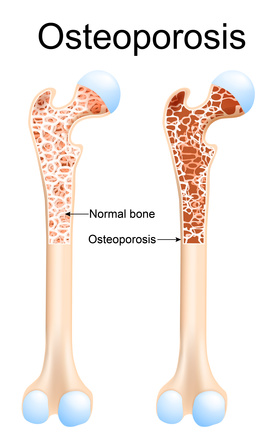
Menopause, Hormone Balance, and How to Know if a Strategy is Working
October 2, 2025
Microbiome Checklist for Mums to Be
October 10, 2025Addressing Microclots in Long Covid

Long Covid is a complex multisystem disease which is highly prevalent but underdiagnosed. According to the recent follow-up of the FADA study by the HSE (December 2024), 16% of the population in Ireland have experienced Long Covid. However, this figure may not reflect the true number, as symptoms are often misattributed to ‘normal ageing’, menopause, or even anxiety. This mislabelling is partly due to a lack of awareness and education within the medical community, as well as the absence of reliable biomarkers for diagnosis.
Sceening for Long Covid
Long Covid’s multisystem nature presents challenges for conventional healthcare systems, which are often organized around single-specialty care. This highlights the potential benefit of incorporating a functional medicine approach to provide more comprehensive care.
The symptoms of Long Covid are diverse and can affect any system in the body, sometimes emerging months after the initial acute infection. This complexity makes it easy to overlook a potential link. As practitioners, it is crucial to take a thorough history and listen carefully to our patients.
During the initial assessment, special attention should be paid to the presence of post-exertional malaise (PEM). PEM can be described as significant exacerbation of symptoms, following even minimal physical, cognitive, or emotional exertion that would not typically cause fatigue in healthy individuals. It can occur immediately post-exertion or be delayed by 24-72 hours. If PEM is reported, it is important to recommend cautious pacing to prevent exacerbation, which can lead to a permanent worsening of the patient’s baseline. Addressing the underlying pathology is essential for gradually increasing the patient’s activity level without triggering setbacks.
Fibrinaloid microclots as an underlying pathology in Long Covid
The formation of anomalous fibrinaloid microclots has been proposed as an underlying pathology in Long Covid1. During acute infection, the Sars-CoV-2 virus can directly infect the endothelial cells lining blood vessels via abundant expression of the ACE-2 receptor. This causes cellular injury and inflammation which disrupts the balance between pro-coagulant and anti-coagulant factors. The inflammatory environment increases fibrinogen levels and alters its structure. This leads to abnormal fibrin formation and misfolding of fibrin fibres, which trap other proteins and complement components into amyloid-like structures. These amyloid-like microclots are much more stable and resistant to normal degradation by plasmin (the main enzyme involved in fibrinolysis).
Persistence of microclots blocks blood flow, reducing oxygen delivery to cells which impacts energy production at the mitochondria. This leads to ongoing symptoms of severe fatigue, cognitive dysfunction, and even orthostatic intolerance or postural orthostatic tachycardia syndrome (POTS) as the body attempts to adapt to reduced blood flow
Addressing ongoing trigger for hypercoagulation
Chronic inflammation and endothelial cell damage may provide a continuous trigger for hypercoagulation in Long Covid. Calming inflammation in the blood vessels is a key target for recovery. The RAGE (Receptor for Advanced Glycation End Products) pathway is an inflammatory pathway which promotes ongoing coagulation. RAGE is a multi ligand receptor on the surface of endothelial cells which is activated by several inflammatory mediators including advanced glycation end products (AGEs), damage-associated molecular patterns (DAMPs) and S100 proteins released during tissue damage.
RAGE activation induces the expression of tissue factor, a potent initiator of the coagulation cascade, leading to thrombin generation and fibrin formation. It also enhances platelet adhesion, activation, and aggregation, promoting clot formation. The inflammatory mediators produced via the RAGE pathway increase levels of PAI-1 (Plasminogen Activator Inhibitor-1), which further inhibits fibrinolysis.
Nutraceuticals shown to reduce RAGE activation include curcumin, quercetin, grape seed extract and withaferin A2. Vitamin D may be useful, especially where deficiency exists3. Dietary supports to reduce high blood sugar levels may be advised, as this also activates the RAGE pathway via advanced glycated end products.
Blood flow and nitric oxide
Regulation of nitric oxide is essential for healthy blood flow, controlling vasodilation and vasoconstriction. Nitric oxide also functions as an anti-inflammatory and inhibits platelet aggregation and adhesion to the vessel walls. Nitric oxide is synthesised from arginine, and in our clinic we have seen a number of patients with very low levels of arginine and citrulline. Supplementation with arginine has been shown to improve outcomes in Long Covid patients along with Vitamin C4. Caution is advised however in patients with potential re-activation of EBV as this can fuel viral replication. Citrulline supplementation may be used instead to effectively increase serum arginine levels.
Breaking down resistant microclots using enzymes
Finally, breaking down resistant microclots may restore healthy blood flow and oxygen delivery to cells. Nattokinase is an enzyme extracted from natto, a traditional Japanese food made from fermented soybeans. It is produced by the bacterium Bacillus subtilis during the fermentation process. Nattokinase is known for its potent fibrinolytic properties and anecdotal reports suggest it is very helpful for Long Covid patients. Caution is advised in patients that may be allergic to soy or in highly reactive patients with histamine issues or Mast Cell Activation Syndrome.
Where nattokinase is not suitable or not effective, lumbrokinase is another fibrinolytic option. Lumbrokinase is a group of enzymes extracted from the digestive system of earthworms, particularly from the species Lumbricus rubellus, and thus may not be suitable for vegans. A clinical trial is currently being conducted by a research team from Mount Sinai and the PolyBio Research Foundation to investigate the use of lumbrokinase in the treatment of Long Covid.
Caution is strongly advised when using any fibrinolytic enzymes in patients at risk for bleeding disorders..
Case Report using anticoagulant therapy – a personal story
As a Nutritional Therapist with Long Covid for two years, I had tried a huge amount of supplements. Many gave me symptomatic relief and daily support for my limited energy but I was still unable to work, leave the house, or manage activities of daily living without assistance. High doses of nattokinase and other systemic enzymes did not improve my baseline. Based on an elevated level of fibrinogen, I was prescribed enoxaparin (Clexane), a low molecular weight heparin (LMWH) anticoagulant. This is structurally similar to natural heparan sulphates found on the surface of endothelial cells. LMWH is fractionated to select the heparins with the most anticoagulant activity. This binds to antithrombin, and inhibits Factor Xa and thrombin (IIa) in the coagulation cascade. LMWH may also reduce endothelial inflammation and reduce the cycle of activation.
Improvements
Within a few weeks of starting subcutaneous enoxaparin, my activity levels improved and all symptoms of Long Covid were beginning to decrease including the severity of PEM. The severity of PEM was measured using a scale which described improvements from ‘incapacitating exacerbations lasting greater than 2 days’ to ‘mild exacerbations’. The FUNCAP questionnaire was used to monitor functional capacity. This improved from a score of 3.3 (moderately affected, usually called ‘housebound’), to 5.07 (mildly affected) which represented a huge improvement in quality of life. At 8 weeks, objective measurements using a FitBit showed an increase from 3000 steps per day to 6000 steps per day and almost doubling of walking speed. Symptoms of POTS improved dramatically also due to improved blood flow. Full details are available in the case report, which is open access – Treatment of Long Covid with Enoxaparin, Cardiopulmonary Physical Therapy Journal. 2025;36(1):70-73 5.
This article was orignally written by Ciara Wright for Pure & Natural practitioner magazine.
References
- Turner S, Khan MA, Putrino D, Woodcock A, Kell DB, Pretorius E. Long COVID: pathophysiological factors and abnormalities of coagulation. Trends in Endocrinology & Metabolism. 2023;34(6):321-344. doi:10.1016/j.tem.2023.03.002
- Palanissami G, Paul SFD. AGEs and RAGE: metabolic and molecular signatures of the glycation-inflammation axis in malignant or metastatic cancers. Explor Target Antitumor Ther. 2023;4(5):812-849. doi:10.37349/etat.2023.00170
- Kheirouri S, Alizadeh M. Vitamin D and advanced glycation end products and their receptors. Pharmacol Res. Aug 2020;158:104879. doi:10.1016/j.phrs.2020.104879
- Tosato M, Calvani R, Picca A, et al. Effects of l-Arginine Plus Vitamin C Supplementation on Physical Performance, Endothelial Function, and Persistent Fatigue in Adults with Long COVID: A Single-Blind Randomized Controlled Trial. Nutrients. Nov 23 2022;14(23)doi:10.3390/nu14234984
- Wright C, Kell D, Pretorius R, Putrino D. Treatment of long COVID with enoxaparin. Cardiopulmonary Physical Therapy Journal. 2025;36(1):70-73.


